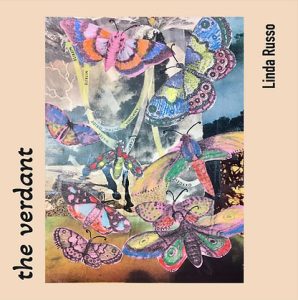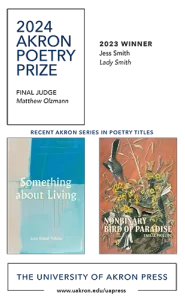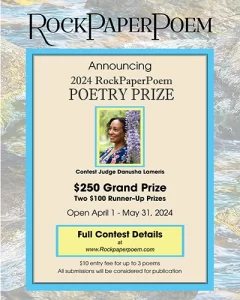The Georgia Review – Winter 2011
Volume 65 Number 4
Winter 2011
Quarterly
Ken Brosky
The Winter 2011 issue is something of a special one, special in two ways, actually. First, there’s the actual content, which is anchored by a nonfiction piece and a fiction piece by Harry Crews The opportunity for connection was too great to pass up, and rightfully so: the editors of The Georgia Review were able to treat readers with an excerpt from Crews’s novel The Gospel Singer, featuring a character inspired by the very events in Crews’s nonfiction piece.
The Winter 2011 issue is something of a special one, special in two ways, actually. First, there’s the actual content, which is anchored by a nonfiction piece and a fiction piece by Harry Crews The opportunity for connection was too great to pass up, and rightfully so: the editors of The Georgia Review were able to treat readers with an excerpt from Crews’s novel The Gospel Singer, featuring a character inspired by the very events in Crews’s nonfiction piece.
The other way in which this issue is special is my own reading circumstance. I happened to read the journal on an airplane sitting next to a very grumpy woman who was making far more notes in her copy of a trashy romance novel than I was in this fine literary journal (her notes, I noticed, were hardly of the intellectual sort). But because I was reading on an airplane, it got me thinking along a very morbid line: which of the works featured in The Georgia Review would I continue reading should the airplane find itself in a precipitous freefall?
The first poem that truly struck me was “Got to Stop” by Coleman Barks. The slick rhythm and distinct images are what really stands out: “This existing has got to stop. / This assuming of an audience. This taking of medicines.” Lines like these had my eyes jumping downward almost too quickly.
Likewise, Carol Frost’s poem “Muse” invokes a feeling of warmth and her lines roll off the tongue: “when cat purr was no poorer than word to form / what mind realizes of the world under the world.”
Ann Pancake’s “Mouseskull” is a fantastic short story about a young girl who wears a mouse skull necklace and is on the precipice of learning something new about her grandfather’s death. She interacts with a drunk named Ham who knew her grandfather, and, as they interact more, you sense that the narrator feels out of place, maybe because things are deliberately kept from her or maybe because death simply isn’t talked about in an open sort of way. As a result, the narrator and the other kids inhabiting the story seem lost in a third place, a place where death is determined by Ouija Boards and other destinies. This story is an incredibly enjoyable first-person piece of prose that methodically draws out its story in a way that complements the narrator’s adolescence.
Eugenie Torgerson’s artwork is the centerpiece of the issue and shines especially in “Sign of the Season” and “The Horizon Presents Itself,” two digital composites that combine destination with scene and use autumn colors that felt so dry I wanted to ask the flight attendant for a second little cup of water. I was drawn to these pieces specifically because, like the cover picture, Torgerson invokes a sense of the known-unknown . . . are we lost in this scene, or have we found it? The map seems almost hidden away, and yet the moment you start staring at it, it threatens to become the foreground.
The works by Harry Crews are a mixed bag, depending on one’s preference. I personally enjoy reading about authors’ inspirations for their fictional works, and so Crews’s nonfiction piece about a stay at the YMCA after a long bike ride had a special place in my heart. In, “We Are All of Us Passing Through,” Crews writes in a conversational tone, with descriptive prose that jumps off the page at times (“It made me feel good, invincible, to limp down a sidewalk with that left boot shooting a few sparks and making a loud and unseemly noise.”). Other times, Crews pulls it back into something you might expect someone to say over a beer (“The worst thing that could happen to you at the YMCA was that you’d get sucked off.”). This combination works perfectly for the story he tells.
For those who would rather immerse themselves in the fiction and avoid the author’s motivations, inspirations, and all the other baggage along with it, I would recommend skipping over to Crews’s excerpt from The Gospel Singer. In this, a “pious” man debates skirmishing with a hungry dog and recounts the somewhat devilish events that have led him to be the manager for the Gospel Singer. The man is a fantastic character, made even more interesting when considering the familiarities with the nonfiction character Crews wrote about in his essay. It shows how real life experience can influence fiction writing. In one passage, the manager justifies murder:
That was what Mr. Keene, the Gospel Singer’s former business manager, had never understood. He could not understand the necessity for penance, for the obligation to direct and control the Gospel Singer’s soul, and therefore Mr. Keene could not understand why he, Didymus, had to have Mr. Keene’s job as business manager to the Gospel Singer. The only thing to do had been to kill him.
The passage made me want to check out Crews’s book, as well as the short documentary on him that’s available through Indieflix.
There’s more, too, good enough to keep me glued to the journal even if the plane were to take a less fortuitous path to the ground. Poetry by Elton Glaser and Albert Goldbarth. Marguerite W. Sullivan’s story “Notes from a Domestic Scene,” in which a wife begins to take studious notes on her husband as if he’s the subject of an experiment (one of the end goals, perhaps, is to determine an accurate measurement of her commitment). Topping it off is a review by Baynard Woods, on two science books, that’s easy to read and incredibly fascinating. Woods has a way with writing that makes his words feel inviting.
[thegeorgiareview.com]




